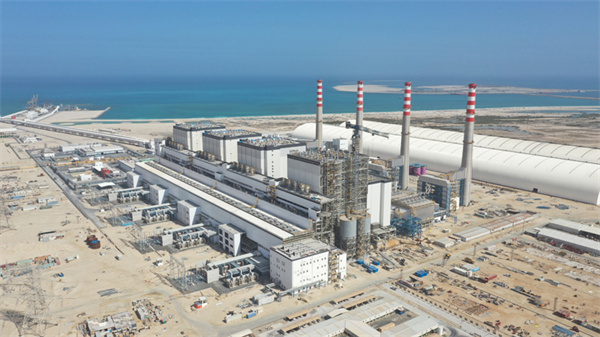The No. 4 generator unit of the Hassyan Power Plant in Dubai contracted by Harbin Electric Corporation (HE) started operation on May 15.

A view of the Hassyan Power Plant in Dubai [Photo/sasac.gov.cn]
Located at the coastal area more than 30 kilometers to South Dubai, the Hassyan Power Plant is a China-UAE high-tech cooperation project and the one of the first projects financed by the Silk Road Fund.
In addition to HE, many other Chinese central state-owned enterprises (SOEs) contributed to Hassyan Power Plant project including China Energy Engineering Corporation Limited, China State Construction Engineering Corporation and China Communications Construction Company Limited. It is a model of Chinese central SOEs joining hands for construction of an overseas project invested, financed, contracted, designed, manufactured and built by China.
Construction of the plant started in January 2017.
The plant is equipped with four ultra-supercritical generator units and has a total installed capacity of 2,400 megawatts. At present, the Nos 1, 2 and 3 generator units are in stable and safe commercial operation.
It's worth noting that the project is equipped with the world’s first ultra-supercritical power generator unit with coal-natural gas dual-fuel full-load capacity.
In response to the carbon peaking and neutrality goals and the UAE Net Zero 2050 strategic initiative, the plant has been using all natural gas instead of coal since 2022.
It is expected that all of the four generator units will be put into commercial operation in the second half of this year.
Once operational, the project will provide 20 percent of the power for Dubai, which will greatly lower power costs for its people and effectively guarantee safe energy supply in Dubai and the entire Arabian region. It will also promote diversified development of local energy structure.
During construction of the plant, advanced denitration, dedusting and desulfuration technologies were used to reduce air pollution. The project department also removed and cultivated 28,000 corals in the construction area and protected fishes and turtles. The waste water produced during operation of the plant is also processed and recycled for inner systems, realizing zero waste water releasing.
(Executive editor: Xie Yunxiao)